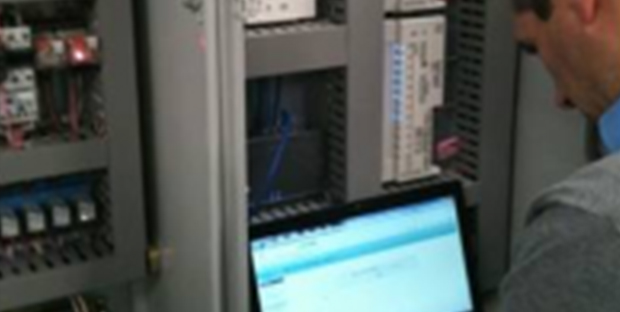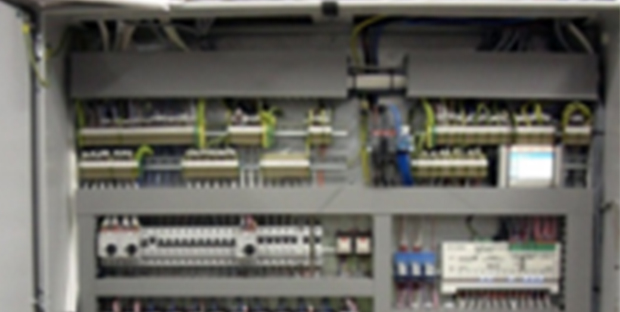PLC ControlBack To All
A Programmable Logic Controller (PLC) is a digital computer used for automation of electromechanical processes, such as control of machinery on factory assembly lines, Building Management Systems (BMS) and lighting fixtures, etc. PLCs are used in many industries and machines, but unlike general-purpose computers, the PLC is designed for multiple inputs and output arrangements, extended temperature ranges, immunity to electrical noise, and resistance to vibration and impact. Programs to control machine operation are typically stored in battery-backed or non-volatile memory. A PLC is an example of a hard real time system since output results must be produced in response to input conditions within a bounded time, otherwise unintended operation will result.
We are proficient with numerous types of PLC control and programming, but the preferred PLC of Building Energy Control Solutions (BECS UK) is a Resource Data Management (RDM) plant controller that operates using self-programmable multi-input, multi-output, user configurable, drag and drop The Data Builder (TDB) software. We use this software to design & build PLC strategies that read the connected inputs and drive the outputs as energy efficiently as possible.
We have found that by using the RDM TDB type of control, it gives us boundless configurations of equipment control. Generally we would incorporate these devices into our control panels to control a client’s Heating, Ventilation, Refrigeration, Lighting and Air Conditioning, but we are constantly being surprised by the vast array of equipment that our customers ask us to control.
Our controls can be networked together to provide Peer-to-Peer communication and share information from each other. They can also be networked to a Front-end system like a RDM Data Manager to provide remote access, central multi-channel time clock control and the ability to control and utilise any input and output on the same network to give you a fully visible and configurable BMS system.
 Get In Touch
Get In Touch
Please fill in the form below and we will get back to you as soon as possible

On-site Commissioning
We use the very latest technology to commission our bespoke PLC strategies, either direct on-site or by remote broadband access to suit our clients needs and specification.

Typical Control Panel
A view of one of our HVAC control panels showing the Resource Data Management PLC logic controllers we regularly use to control a buildings Heating, Ventilation, Air Conditioning and Lighting
